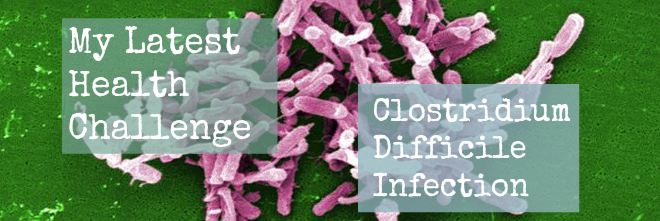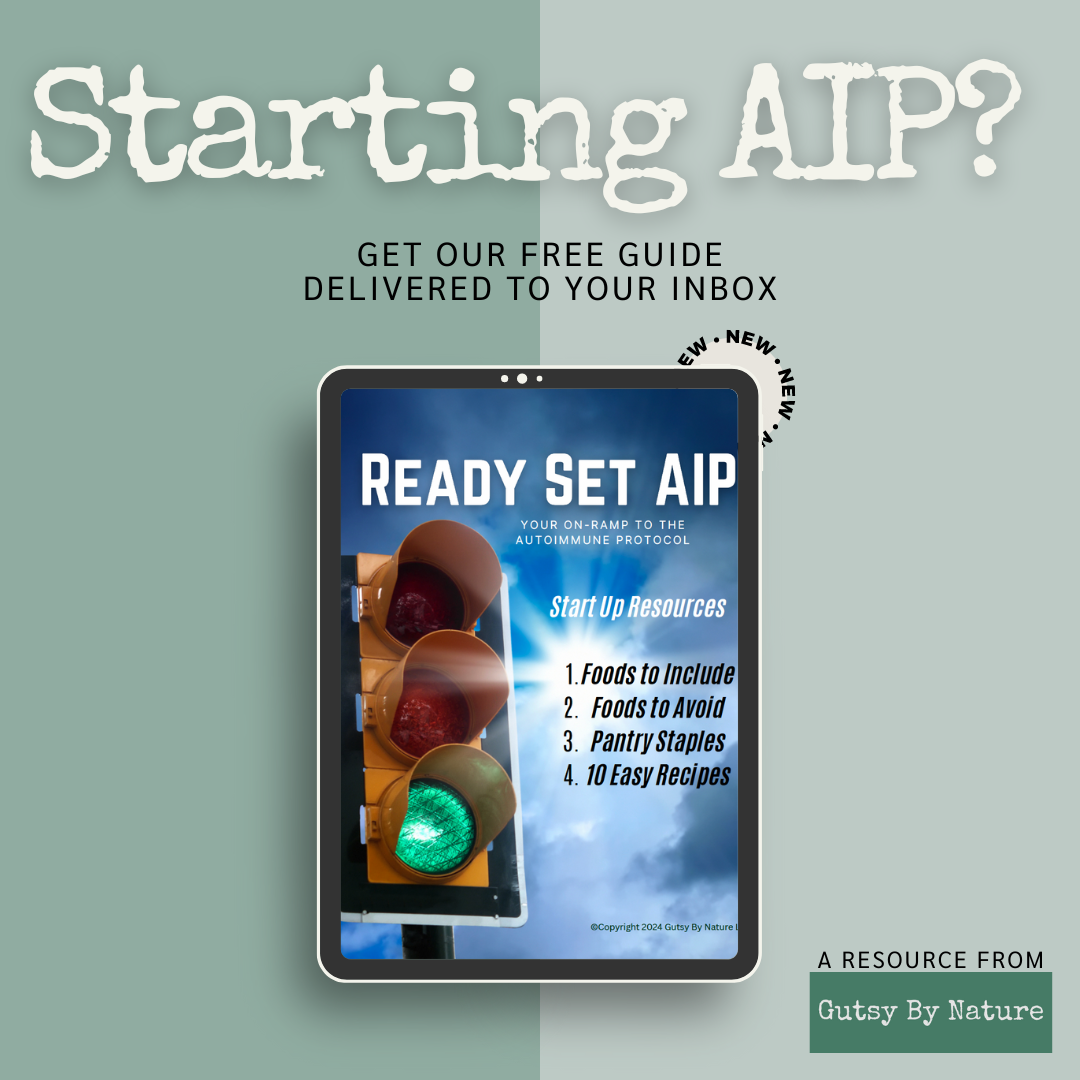This is not a fun post to write. I have mentioned that I’m being treated for a recurrent clostridium difficile on social media a couple times, but mostly I’ve kept this latest health challenge to myself. If you know anything about the symptoms of a c diff infection, then you probably understand why it isn’t something a person would want to broadcast widely! But I’m putting on my brave face today and sharing with you the story so far, in the hopes that what I have learned will help others.
Let’s start at the beginning…
What is clostridium difficile?
Clostridium difficile (also known as “c. diff” or “c. difficile“) is a bacterium found in the intestines that when it overgrows, releases toxins that attack the lining of the intestines, causing a condition called clostridium difficile colitis. It is believed that healthy people can and often do have the bacteria in their guts, but that it is kept in check by a balance of other bacteria. The toxins are detected in the stool and diagnosis can be made via a stool sample.
What are the symptoms of a clostridium difficile infection?
Symptoms can range from relatively mild to life threatening, including watery diarrhea (up to 15 times a day), severe abdominal pain, loss of appetite, fever, blood or pus in the stool, and weight loss. In some cases c. diff can even lead to perforation of the intestines, which can be deadly.
Who is at risk for a clostridium difficile infection?
C. diff usually occurs after treatment with a broad spectrum antibiotic, which kills off other beneficial bacteria and creates the right conditions for c. diff to overgrow. Therefore, people in hospitals and long term care facilities, who are frequently treated with antibiotics for other conditions, are at high risk. According to WebMD, other risk factors include the following:
- Surgery of the gastrointestinal (GI) tract
- Diseases of the colon such as inflammatory bowel diseases or colorectal cancer
- A weakened immune system
- Use of chemotherapy drugs
- Previous C. diff infection
- Advanced age — 65 or older
- Kidney disease
- Use of drugs called proton-pump inhibitors, which lessen stomach acid
(If you are keeping score, I have about half of these risk factors!)
What is the standard treatment for clostridium difficile infection?
Doctors typically prescribe a 10-14 day course of an antibiotic that targets the c. diff specifically. Options include metronidazole (Flagyl), vancomycin (Vancocin), and fidaxomicin (Dificid). A second round of antibiotics are needed in about 25% of cases and many doctors recommend also taking the probiotic sachromyces boullardi.
My story so far…
I actually had a c. diff infection back in 2008, after the first three of seven bowel surgeries I had between 2007 and 2009. My symptoms included diarrhea, fevers, intense abdominal pain, and general malaise (general “feeling like crap”). Though it was a debilitating illness, it was successfully treated with vancomycin and I recovered.
Fast forward to May 2014 when I took broad spectrum antibiotics in conjunction with unrelated medical issues. I immediately had watery diarrhea but no other symptoms that raised any concern, so I just chalked that up to the after effects of the antibiotics whipping out my “good” gut bacteria and tried to load up my diet with fermented foods and tried different types of probiotics. The diarrhea continued and over the next two months I lost weight despite my best efforts and I became anemic again, but otherwise I felt fine. No pain, no fevers, and I continued my regular work and personal life activities without interruption.
Finally, in July 2014 my gastroenterologist ordered a stool test for the c. diff toxin, even though I assured him that I certainly didn’t have it. I told him that I knew what that felt like from my experience six years earlier and this was completely different. Surprise! It was positive. He started me on a 14 day course of vancomycin and the diarrhea improved, but came back less than two weeks after stopping the medication. I also continued to lose weight. A repeat test was positive and I started a second course. As of the writing of this post, I am on day 12 of that second course.
What role does the Paleo diet play in this?
C. diff is a nasty bugger and even squeaky clean eating is NOT going to make it go away. However, I do think that I have benefited greatly from my adherence to a nutrient dense and anti-inflammatory diet. Back in 2008 when I had my first go around with c. diff I was eating a standard American diet based on wheat and other grains and full of lots of processed foods. My typical breakfast would be a bagel with cream cheese, lunch was usually a sandwich, dinner was often some kind of pasta-based casserole or other dish made from boxes or cans. I didn’t eat a lot of fruits or vegetables because they seemed to irritate my digestive tract and I loaded up on cookies, chips, crackers and other foods with empty calories because I needed to regain weight I’d lost during my illness and recovery from surgery.
Like most Crohn’s patients, I’d been told that what I ate didn’t matter much and I should just not eat foods that made me feel worse but otherwise not worry about it. I followed that advice. No surprise, when I got a c. diff infection, my body was not equipped to deal with it and it was absolutely debilitating.
I believe my now healthy gluten-free diet comprised of whole nutrient dense foods based on a Paleo template has made all the difference in how I have been able to deal with this infection. Don’t get me wrong – it is still serious and I am very unhappy with how thin and unhealthy looking I am right now. But, I have had none of the fevers and pain typically associated with c. diff infections and I’ve been able to continue my regular life.
What is next for me?
I don’t have a lot of confidence that this round of antibiotics is doing the trick. I’m still struggling to keep my weight up and while I am no longer having diarrhea like I was, my digestion is definitely up and down. Fortunately, there is another treatment option out that my doctor has had success with and will pursue it next if this indeed does not work.
Fecal microbiota transplantation (FMT) is the process of transplanting fecal bacteria from a healthy individual into the recipient and it has been shown to be effective for patients suffering from c. diff infection. Considered experimental for other conditions, it has actually received United States Food and Drug Administration (FDA) approval for use in treating c. diff because of these studies. I’m just beginning to learn about FMT, but find it both fascinating and exciting. Clearly, our understanding of the gut microbiome and how the different bacteria interact with each other to create both health and disease states is in its infancy.
Want to learn with me? Here are some of the articles and resources I’ve found so far on FMT…
- Quick, inexpensive and a 90 percent cure rate – Mayo Clinic
- How Stuff Works: How Fecal Transplants Work
- Fecal microbiota transplantation as effective treatment for C. difficile and other diseases – American Society for Gastrointestinal Endoscopy
- Fecal microbiota transplantation in in relapsing Clostridium Difficile infection – Therap Adv Gastroenterol
- The Power of Poop
Whether I personally go forward with FMT will depend on how things go over the next 1-2 weeks. Will keep you posted!
UPDATE (October 25, 2014): On September 30, I had a FMT. I started to feel better almost immediately – more energy, brighter mood, diminished (but still lingering) diarrhea. Two weeks later, I returned to my doctor for a follow up and he ordered a repeat stool test for c diff. It was positive. I am now waiting until we reach the four week mark, when I will get another stool test and then discuss next steps if it is still positive. This could include further antibiotic treatment and/or a repeat FMT.
UPDATE (November 23, 2014): Success! Read my follow up post here.




7 replies on “My latest health challenge: Clostridium difficile infection”
How are you now? I have been treated once and was about to be treated twice and was told to stop because I no longer had the diarrhea. I have struggled with what I need to eat. After loosing 35 pounds (that was ok because I was a little over weight) ,but now I can’t afford to lose anymore weight. The diarrhea has reoccurred along with all the other symptoms. I have gotten in touch with my doctor. This things seems to never want to go away. I have a hard time trying to find something I can eat that will not make me sick. What do you do?
Kim – The fecal microbiota transplant (FMT) I had on September 30 was ultimately successful and I am c diff free now. When the infection was active I found that everything I ate made me sick, just like you. I had to get rid of the bacteria before I could even begin to recover. You can read about that here: https://gutsybynature.com/2014/11/23/clostridium-difficile-a-fecal-microbiota-transplant-fmt-success-story/
WEre there times you had constipation and soft normal stools, or was it all the time diarrhea, loose, watery stools? I can’t imagine months with loose watery stools.
No, it was pretty much always loose watery stools. Sometimes I would have a “good” day and not have to run to the restroom very many times, but they were still always diarrhea.
[…] of living with Crohn’s disease this year, including a difficult bout with a drug resistant clostridium difficile infection and gave me the strength to share the highly personal story of how I eventually defeated it with a […]
[…] has not been without its bumps. After taking antibiotics for an unrelated issue, I contracted a drug resistant clostridium difficile infection, for which I ultimately needed a fecal microbiota transplant (FMT). I also started getting kidney […]
Great info. Lucky me I discovered your blog by accident (stumbleupon).
I’ve saved it for later!